|
Page < 1 2 3 4 5 6 7 8 9 10 11 12 13 14 15 16 17 18 19 20 21 22 23 24 25 >
Show
in alphabetical order
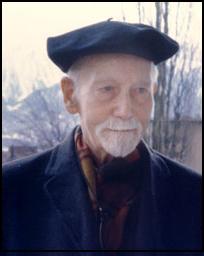 271.
Paul Brunton
(1898 -1981) was a British philosopher, mystic, traveler and
author of A Hermit in the Himalayas,
A Message from
Arunachala
and The
Orient: Legacy to the West.
A Search in
Secret India is one of the great classics of spiritual travel
writing. With a keen eye for detail, Paul Brunton describes taking a circular journey round
India: living amongst yogis, mystics and gurus, seeking the one
who would give him the peace and tranquility that come with
self-knowledge. His vividly told search ends at Arunachala, with
Sri Ramana Maharshi. He has observed: 271.
Paul Brunton
(1898 -1981) was a British philosopher, mystic, traveler and
author of A Hermit in the Himalayas,
A Message from
Arunachala
and The
Orient: Legacy to the West.
A Search in
Secret India is one of the great classics of spiritual travel
writing. With a keen eye for detail, Paul Brunton describes taking a circular journey round
India: living amongst yogis, mystics and gurus, seeking the one
who would give him the peace and tranquility that come with
self-knowledge. His vividly told search ends at Arunachala, with
Sri Ramana Maharshi. He has observed:
"We are
witnessing in the West the appearance of an at present thin but
slowly deepening current of interest in those very thoughts and
ideas which the young men of India are today doing their best to
reject as inadequate to their needs and which constitute the
faith and religious traditions of their forefathers."
"For
Indian culture is fruitful in the domain of psychology,
philosophy, and religion, so fruitful that there are few
doctrines which appeared out of original Western sources that
have not already been anticipated and developed...in India. "
The Bhagavad
Gita contains the mental quintessence and successful
synthesis of the various systems of religion and philosophy, it
offers a unique epitome of the high culture of prehistoric
India. The following sentences from the Bhagavad Gita unite in
making the same declaration of an unseen Reality and Unity which
dwells behind nature.
“My self is
the bearer of all existence.”
“All this world is pervaded by Me in My unmanifested form.”
This doctrine
is the keystone in the entire arch of the earliest Indian
philosophy.
This idea appealed to several “wise men” of our
Western world - philosophers and scientists, living so many centuries later, including
Tennyson, Thomas Carlyle, and Ralph Waldo Emerson.
 Alfred
Lord Tennyson,
(1809-1892) one
time Poet Laureate of England sings: Alfred
Lord Tennyson,
(1809-1892) one
time Poet Laureate of England sings:
“The sun, the
moon, the stars, the hills and the plains,
Are not these, O Soul, the vision of Him who reigns?
The ear of man cannot hear, and the eye of man cannot see;
But if we could
see and hear this vision – were it not He?”
 "Ralph
Waldo Emerson (1803-1882), whose
Transcendentalism earned him the appellation of "the Boston
Brahmin." Reading through his writings and essays we find
several passages which insists, as the Hindu texts on the
subordinate character of the visible material creation." "Ralph
Waldo Emerson (1803-1882), whose
Transcendentalism earned him the appellation of "the Boston
Brahmin." Reading through his writings and essays we find
several passages which insists, as the Hindu texts on the
subordinate character of the visible material creation."
The work of
physicists like Currie, Rutherford, Fermi, Cockcroft, Chadwick,
Anderson and Millikan has brought us to the practical and proven
scientific principle that the inner structure of matter is
reducible to a single fundamental substance, an essential and
immortal energy which is the "life" of the myriad
forms that make up the universe. Modern development in the
laboratory will vindicate the theory of a single element
underlying all the visible and different manifestations of
material Nature, we shall have to grant that the
assertions of the Hindu philosophers, made thousands of years
ago....are but results of the insight practiced by keenly
perceptive and concentrated minds."
"The ancient
Hindus took their philosophic statements in the nature of a
revelation from on high, as issuing forth from their seers as a
result of a personal self-experience in the spiritual domain. Our
Western scientists have no such experience, and if they are
approaching similar conclusions, it is because they are working
their way from the profoundest depths of this material world up
to its farthest frontier where the ions elude them and vanish
into mystery……the wisest men of the ancient East and the
modern West…are beginning to arrive at precisely the same
conclusions."
" This
Indian doctrine declares human cognition of the entire manifold
universe to be illusionary in character. The vast multitude of
tangible objects and tangible creatures which we so plainly
witness around us were said to be the product of the
constructive imagination of the One Hidden Self. Man and his
material environments were but finite dreams passing through the
mind of the Infinite Dreamer. Consequently
all that we know of the world is nothing more or less than a
series of idea held in our consciousness. Thus we
arrive at a completely idealistic metaphysics which, because of
its very nature, must apparently remain for ever purely
speculative and beyond the scope of the finest instruments which
can be devised to prove or disprove. Nevertheless the
strangeness and unfamiliarity of the doctrine fascinated the
Indian mind to an amazing extent. That
this early foreshadowing of modern idealistic philosophy was not
merely a worthless superstition is evidenced by the fact that
some brilliant minds of the West have been equally fascinated
and perplexed. "
One of the
greatest 19th century scientists was Thomas
Henry Huxley (1825-1895), his work, Collected
Essays vol. VI, serve to show how
much ancient Indian philosophy anticipated modern Western
thought.
(source:
Indian Philosophy and
Modern Culture - By Paul Brunton p. 9 - 92 London
Rider & Co. Paternoster House, E. C). For more on Paul
Brunton refer to chapter on Glimpses
VI).
 272.
William
Cooke Taylor (1800-1849) author of several books
including A popular history of British
India, commercial intercourse with China, and the insular
possessions of England in the eastern seas. He spoke
glowingly of Sanskrit literature: 272.
William
Cooke Taylor (1800-1849) author of several books
including A popular history of British
India, commercial intercourse with China, and the insular
possessions of England in the eastern seas. He spoke
glowingly of Sanskrit literature:
"It was an
astounding discovery that Hindustan possessed, in spite of the
changes of realms and chances of time, a language of unrivalled
richness and variety; a language, the parent of all those
dialects that Europe has fondly called classical - the source
alike of Greek flexibility and Roman strength. A philosophy,
compared with which, in point of age, the lessons of Pythagoras
are but of yesterday, and in point of daring speculation Plato's
boldest efforts are tame and commonplace. A poetry more purely
intellectual than any of those which we had before any
conception; and systems of science whose antiquity baffled all
power of astronomical calculation. This literature, with all its
colossal proportions, which can scarcely be described without
the semblance of bombast and exaggeration claimed of course a
place for itself - it stood alone, and it was able to stand
alone."
"To
acquire the mastery of this language is almost the labor of
life; its literature seems exhaustless. The utmost stretch of
imagination can scarcely comprehend its boundless mythology. Its
philosophy has touched upon every metaphysical difficulty; its
legislation is as varied as the castes for which it was
designed."
(source: Journal
of the Royal Asiatic Society Vol. II (1834) - W. C. Taylor's
paper on Sanskrit Literature).
273.
Gertrude Emerson Sen (
- 1982) historian and
journalist and Asia specialist. Author of several books
including The Story of Early Indian
Civilization.
She married a Bengali - Basiswar Sen and in her Voiceless
India, she
learned to love the deep-rooted Indian view of life, Indian ways
of thought and Indian ideals.
 She considered Hinduism
a priceless heritage of India. The vast archaic
literature been handed down, and which faithfully preserves the
ideas and ideals of those far-off times. It establishes the
wonderful continuity and depth of Indian civilization. She considered Hinduism
a priceless heritage of India. The vast archaic
literature been handed down, and which faithfully preserves the
ideas and ideals of those far-off times. It establishes the
wonderful continuity and depth of Indian civilization.
"As the Indian
sages pondered on the problem of good and evil, they
were confronted with the apparent injustices and cruelties of
the world around them, and this state of affairs was finally
reconciled with their idea of Brahman by the conception of a
universal ethical law applying to all life. This law as
proclaimed as the law of karma.
In the words of the Upanishads,
"As is a man's desire so is his will, and as is his will so
is his deed, and whatever deed he does that he will reap."
"India
held a strange and irresistible attraction for the whole of Asia
in the first millennium. People in the most primitive stage of
development as well as the Chinese with a civilization as
ancient and illustrious as India's own, acknowledged India as
first in the supreme realm of spiritual perception. Yet the
civilization of India, transplanted abroad, did not have a
deadening effect of suppressing or stifling native genius, as
the imposition of a foreign culture often does. On the contrary,
it called out the best that others had to give. As a result of
India's fertilizing influence, new and distinctive types of
culture everywhere arose, and each new colony was able to create
and contribute fresh treasure, to be added to the great Asiatic
heritage. How Indian religions and Indian culture blossomed anew
in foreign environments and endured for many centuries is a
fascinating and little appreciated chapter of Indian
history."
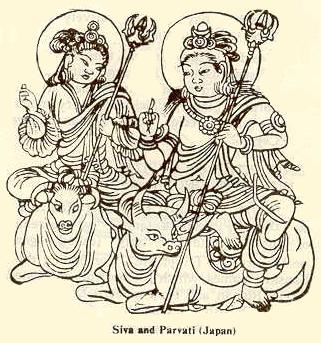
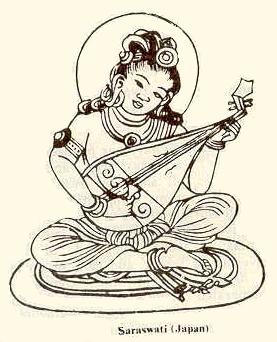
Shiva
and Parvati -
Japan Goddess Saraswati - Japan
India's religious and
cultural ideas lapped at the far shores
of Korea and Japan.
(image
source: Our Heritage and Its
Significance - By S. R. Sharma).
For
more refer to chapter on Greater
India: Suvarnabhumi and
Sacred
Angkor.
***
"The
Indian colonies which began to grow up all along the periphery
of the motherland were essentially cultural and religious,
rather than political or racial. Yet they were subject to strong
Indian influences. These swept outward like tidal waves. They
passed south to Sri Lanka and beyond to the remote islands of
the Pacific. They inundated Burma, Malaya, Siam and Indo-China.
They overwhelmed Nepal and Tibet. From Afghanistan, they passed
along to central Asia and China. They lapped at the far shores
of Korea and Japan. Indian religious ideas and literature,
Indian conventions of art and architecture, Indian legal codes
and social practices...all took root in these outer
territories." "For a long time Indians seem to have
held the monopoly of maritime commerce in both the southern and
eastern seas of Asia. They possessed large ocean-going vessels,
in which they first ventured to Sri Lanka, Burma, Malaya and
gradually they extended their journeys to Java and Sumatra and
then to southern China.'
(source: The
Pageant of India's History - By Gertrude Emerson Sen
p. 52 - 322).
274.
J. Seymour Keay (
? ) British M. P. Banker in India and Indian Agent writing in
1883:
"
It cannot be too well understood that our position in India has
never been in any degree that of civilians bringing civilization
to savage races. When we landed in India we found there a hoary
civilization, which, during the progress of thousands of years,
had fitted itself into the character and adjusted itself to the
wants of highly intellectual races. The civilization was not
perfunctory, but universal and all pervading - furnishing the
country not only with political systems, but with social and
domestic institutions of the most ramified description. The
beneficent nature of these institutions as a whole may be judged
from their effects on the character of the Hindu race. Perhaps
there are no other people in the world who show so much in their
character the advantageous effect of their own civilization.
They are shrewd in business, acute in reasoning, thrifty,
religious, sober, charitable, obedient to parents, reverential
to old age, amiable, law-abiding, compassionate towards the
helpless and patient under suffering."
(source:
Hindu
Swaraj or Indian Home Rule - By M. K. Gandhi p. 106).
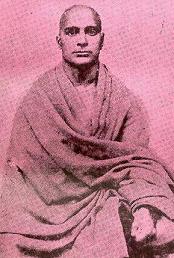 275.
Swami Rama Tirtha (1873-1906)
renounced his career as a Mathematician in order to practice and
preach Vedanta. 275.
Swami Rama Tirtha (1873-1906)
renounced his career as a Mathematician in order to practice and
preach Vedanta.
"Sanatana
means Eternal. In its purest form, this religion is Sanatana,
because it is based on Truth. Truth is immortal and is never
annihilated. It remains the same yesterday, today and forever.
Therefore our true Sanatana Dharma, in its purest form, cam
never be exterminated. It, however, does not follow that we
should relax into inaction, in the belief that our religion is
the best or that it can never be destroyed. No, no. This idle
thinking is the result of our indolent minds. It
is, therefore, absolutely essential for the followers of
Sanatana Dharma to keep it safe from the evil and aggressive
designs of the non-Hindus, who are generally ever ready to
malign us."
Truth is not
only Eternal but also unlimited and infinite. It is
all-embracing. It is the religion for all, irrespective of their
caste, creed or nationality. In fact, it is great and glaring,
and never sectarian. It is liberal. Other religions have all
been founded by individuals. But this
Sanatana Dharma is not based on the teachings of any one single
person. Much before Rama, Krishna, Buddha, Christ,
Mohammed, Shankarcharya and others, the germs of the fundamental
principles of Sanatana Dharma were present.
Sanatana Dharma
is very simple and natural because it is based on the Laws of
Nature. The man whose life is molded according to these Laws,
irrespective of their being physical, mental and spiritual, is
in the real sense, a Sanatani. Santana
Dharma is a grand and all-embracing religion. There
should be no narrow mindedness in a Sanatani. He
should feel His presene in the Chandala, in the thief, the
lowest beings, the sinners, the foreigners and in all. He should
worship God in all, especially in the hungry, the needy and the
downtrodden with selfless service and liberality. This is in
real sense, the true worship of and devotion to God."
(source: Om
Sanatana Dharma - By Swami
Rama Tirtha p.
20-29 and p. 73).

Carved
temple horse court.
***
276. R S Nathan
( ? )
author
of Hinduism That is Sanatana Dharma, observes:
"The
result is the profound Philosophy of
Vedanta to which more and more men and women from all
parts of the world are flocking today for light, solace and
fulfillment. So in India, Philosophy is not a hobby or an
escape, but an intense search for Truth after having found from
experience that mundane achievements only complicate our lives
and takes us farther from our real goal. In fact Rishis of yore
did not make a distinction between Science on the one side, and
Religion and Philosophy on the other. The Science of the Upa-Vedas
and the Vedanagas, and the Philosophies are the Vedas-Vedangas,
all culminating in the Vedanata – the end of the Vedas.
"Sanatana
Dharma" the most ancient of all the living religions of
today, a non-prophetic religion popularly known as
"Hinduism" since the last few centuries, based on
all-embracing universal love, the eternal values of life and
human endeavor, time-tested knowledge and wisdom, and
all-comprehensive in its vision, has a permanent message
enshrined in it, for the entire humanity irrespective of time,
place and circumstances."
(source: Hinduism
That is Sanatana Dharma - By R S Nathan preface and
36 - 46 published by Central Chinmaya Mission Trust - Bombay
1989).
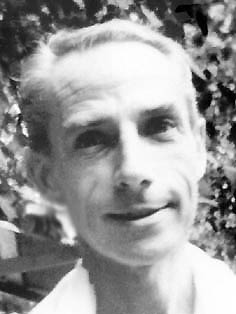 277. Satprem (1923
-2007) aka Bernard Enginger, a sailor and a Breton born in Paris. A
member of the French Resistance. Satprem was arrested by the
Gestapo when he was twenty and spent a year and half in
concentration camps. Devastated he journey first to Upper Egypt,
then to India, where he served in the French colonial government
of Pondicherry. There he discovered Sri Aurobindo and Mother.
Their Message - "Man is a transitional being" - struck
a deep chord. 277. Satprem (1923
-2007) aka Bernard Enginger, a sailor and a Breton born in Paris. A
member of the French Resistance. Satprem was arrested by the
Gestapo when he was twenty and spent a year and half in
concentration camps. Devastated he journey first to Upper Egypt,
then to India, where he served in the French colonial government
of Pondicherry. There he discovered Sri Aurobindo and Mother.
Their Message - "Man is a transitional being" - struck
a deep chord.
His first essay
was dedicated to Sri Aurobindo or the
Adventure of Consciousness a book that has led so
many to Sri Aurobindo and the Mother. His book, Evolution
II translated from the French by Michel Danino is
dedicated to the Souls of India:
"the millions souls of India
unknown to themselves
unknowing of their own Treasure
with my love infinite
In his book,
Evolution II, he wondered after Man, who? But the question is:
After Man, how?
(source: Evolution
II - by Satprem - Translated
by Michel Danino).
Satprem
believed in the Hindu concept of
reincarnation and asks:
"Which
sadist God has decreed that we would have only one life to
realize ourselves and through which colossal ignorance Islam and
Christianity have decided that we shall go to Heaven or Hell,
according to the deeds, bad or good, which we have committed in
a single life?"
(source: Arise
O'India - By Francois Gautier
p. 10-11
ISBN 81-241-0518-9 Har-Anand Publications 2000).
 278.
Allama Iqbal (1873-1938) Indian thinker and
poet. 278.
Allama Iqbal (1873-1938) Indian thinker and
poet.
The great
civilization of the Indian subcontinent, has had its roots deep
in antiquity, some seven to eight thousand years ago, and its
flowering in the third millennium B.C. still lives on. In
contrast, when we look round the world we are surprised by the
fact that the Egyptian and Mesopotamia civilizations that
flourished alongside this Indic Civilization have all
disappeared, leaving hardly any trace behind. Why? The Indian
psyche has indeed been pondering over this great cultural
phenomenon of 'livingness', and this quest has been very aptly
echoed by him in the following words:
Yunan-o-Misra
Ruma sab mit gaye jahan se
Ab tak magar hai baqi namo-nishan hamara
Kuchh bat hai ki hasti mitati nahin hamari
Sadiyon raha hai dushman daur-i-zaman hamara
Ancient
civilizations of Greece, Egypt and Rome have all disappeared
from this world, but the elements of our civilization still
continue. Although world-events have been inimical to us for
centuries, there is something in our
civilization which has withstood these onslaughts.
(source: The
Saraswati Flows on: The Continuity of Indian Culture - By B.
B. Lal. p. Chapter V p. 136). For more on B B Lal
refer to chapter Quotes251-270).
Iqbal, described Lord
Ram as the Imam of Hindustan.
(source: Saeed
Naqvi column - indianexpress.com).
279.
Ekkirala Krishnamacharya (1926-1984) author of Cradle of Indian
History, physician,
educationist and Kulapati (rector) of the Theosophy-related
World Teacher Trust in Visakhapatnam. Fondly
called by his disciples as `Master E.K'.
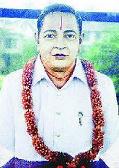 "There
was no religion in this land, nor was any religion necessary for
the Indians. The ancient Indians had a code of law for man to
follow. This was framed in accordance with various truths
working in natrue. The law of the existence of nature and its
creation was observed in all its detail and the law for man to
follow as copied in accordance with it. This was called Dharma.
The term means that which bears and protects. It is
that which bears and protects when we follow (it). Man is
honored when he honors it. He receives protection when he
protects it. It was made into a constitution called Bharata
Dharma. It was the path of life commonly accepted
throughout the land. Any attempt for religion is naturally
limited and narrow when compared with this." "There
was no religion in this land, nor was any religion necessary for
the Indians. The ancient Indians had a code of law for man to
follow. This was framed in accordance with various truths
working in natrue. The law of the existence of nature and its
creation was observed in all its detail and the law for man to
follow as copied in accordance with it. This was called Dharma.
The term means that which bears and protects. It is
that which bears and protects when we follow (it). Man is
honored when he honors it. He receives protection when he
protects it. It was made into a constitution called Bharata
Dharma. It was the path of life commonly accepted
throughout the land. Any attempt for religion is naturally
limited and narrow when compared with this."
So
Dharma, is nothing but living in accordance with the laws of
nature. He used to say that the only qualification required
to learn the `Gayatri Mantram'
was the urge to learn it, and today lakhs of people all over the
world, irrespective of caste, creed or religion have mastered
it. He siad: "Secularism only means `not guided by religion' but not
discarding religion altogether. While some countries do not feel
ashamed to call themselves Christian or Islamic nations, it is
only India which is giving freedom to all people to practize
their own religion,"
In
1974, he toured Europe and America five times between 1972 and
1983 and propagated the message of
Sanatana Dharma, spiritual astrology, Pantanjali's Yoga,
Bhagavadgita and spiritual psychology.
(source:
Who is a Hindu? - Koenraad Elst
and An
embodiment of service - The Hindu -
Sept 09' 02).
 280.
Swami Ghanananda Saraswati (
?) the
first African swami was
initiated by Swami Krishnanand of India in 1975. He heads the
Hindu Monastery of Africa in Accra, Ghana, regularly imparting
spiritual guidance to devotees. He writes: 280.
Swami Ghanananda Saraswati (
?) the
first African swami was
initiated by Swami Krishnanand of India in 1975. He heads the
Hindu Monastery of Africa in Accra, Ghana, regularly imparting
spiritual guidance to devotees. He writes:
"African religions and
Hinduism have certain similarities. Traditional African
religions recognize the many aspects of Brahman and worship God
as Prithivi, Vayu, Varuna, Agni, etc., just as in Hinduism. Only
Africans who have been exposed to Hinduism can appreciate these
similarities which help them to better understand African
beliefs and aspirations."
"I was searching for the
truth. I went through some books on
yoga and discovered that Hinduism is a very good religion. It is
open minded. It teaches you about God. It also teaches you about
science of the soul. Later I went to Rishikesh and
stayed with Sivananda's ashram, the Divine Life Society. There I
found that Hinduism is a straightforward religion that revealed
the truth.
I believe that Hinduism will grow
with time among both Indians and Africans. It is now time for
India and Hindu masters to turn their attention to Africa, with
swamis and brahmins coming to conduct workshops, etc., and
thereby give Africa a chance to remove the veil of spiritual
darkness that has given Africa the name "the dark
continent."
(source:
Hinduism
Today - August 1998 and
July/August/September 2003 p. 63).
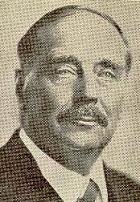 281.
Herbert
George H. G. Wells (1866 -1946) historian, a bitter
critic of the Roman Catholic Church and author of
several books including A Short History
of the World and Crux
Ansata: An Indictment of the Roman Catholic Church and
The
Time Machine. 281.
Herbert
George H. G. Wells (1866 -1946) historian, a bitter
critic of the Roman Catholic Church and author of
several books including A Short History
of the World and Crux
Ansata: An Indictment of the Roman Catholic Church and
The
Time Machine.
In
Hinduism, tolerance is not simply a matter of policy but an
article of faith. He say that Hindu kings actually welcomed with
open arms Christian missionaries
and Muslim fakirs and Buddhist monks for a free exchange of
ideas. One great Hindu king, Ashoka, in fact changed his religion
to Buddhism and propagated Buddhism throughout India.
(source:
Am I a Hindu - by Ed Viswanathan
p. 8).
H. G. Wells
has remarked: "The history of India for many centuries had been happier,
less fierce, and more dreamlike than any other history. In these favorable
conditions, they built a character - meditative and peaceful and a
"
nation of philosophers such as could nowhere have existed except in India."
(source: The Outline of
History - By H. G. Wells p. 855).
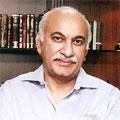 282.
M.
J. Akbar Indian journalist and editor of Asian age and author of The
Shade of Swords: Jihad and the Conflict Between Islam and Christianity
writes:
282.
M.
J. Akbar Indian journalist and editor of Asian age and author of The
Shade of Swords: Jihad and the Conflict Between Islam and Christianity
writes:
"Hinduism
has a supernatural aspect, which involves faith in an afterlife;
and a natural one, which guides the worldly behavior.
If
Hinduism has a defining message, then it is humanism. There is
space in its philosophy for everyone, which is one reason why
India is a home to every single religion in the world. Anyone
who has been persecuted anywhere else has found an undisturbed
haven in India. This remained true even when men distorted the
philosophy of Hinduism and introduced the inequities of caste:
The attitude of Hinduism to other faiths continued to be
liberal. Hinduism is synonymous with humanism.
That is its
essence and its great liberating quality."
(source:
Of
human bondage -
arabnews.com).
 283.
Andrew Harvey (1952
- ) has devoted
hi life to studying the world's mystical traditions. He is the
author of several books including The Direct Path
creating
a journey to the divine through the world's mystical traditions. 283.
Andrew Harvey (1952
- ) has devoted
hi life to studying the world's mystical traditions. He is the
author of several books including The Direct Path
creating
a journey to the divine through the world's mystical traditions.
"The Sanatana Dharma is a
gallimaufry of the most extravagantly varied faiths, rituals,
customs, beliefs; Hinduism has no single dogmatic authority and,
until very recently in its history, no "missionary
zeal" to convert others, sine it has never seen itself as
the one true religion or the only hope of salvation.
"While there is no one 'exclusive'
dogmatic Hindu tradition, then, there is a very definitely, a
spirit of inquiry and of revelation that is so consistent with
the greatest of modern Hindu mystics, Ramana Maharshi...down the
Upanishads more than two thousand years before him. It is this
consistency that gives the Hindu mystical tradition its timeless
purity, weight, and grandeur. "
"What, then, is the core
truth of the Hindu tradition? It is the truth of the mystery of
a Spirit that pervades, creates, and transcends all things and
of each soul's conscious identity with it beyond space and time.
In the Upanishads, this all-pervading, all-creating,
all-transcending Spirit is named Brahman. For the Upanishads and
all the later teachings rooted in them, every human being is
naturally one with Brahman in his or her Atman, his or her
"soul" or "indwelling core of divine
consciousness." The aim of human life and the source of
liberation from all the chains of life and death is to know,
from inmost experience, the Atman's identity with Brahman and to
live the calm, fearless, selflessly loving life that radiates
from this knowledge."
"It
is its sublime ancient tolerance, that was the true proof of the
wisdom and mature dignity of the Hindu tradition.
While there is no one "exclusive" dogmatic Hindu
tradition, then, there is very definitely, a spirit of inquiry
and of revelation that is so consistent that we find one of the
greatest of modern Hindu mystics, Raman Maharishi, speaking in
ways and with images that echo exactly the terminology of the
anonymous seers who wrote down the Upanishads more than two
thousand years before him. It is this
consistency that gives the Hindu mystical tradition its timeless
purity, weight, and grandeur. It is as if one eternal
voice is speaking in and through a myriad different voice
tirelessly exploring different registers of its own majestic
range, as if all the tradition's poems and meditations and
philosophical texts are, in Zaehner words,
"different-shaped peaks in one vast, grand, interconnected
mountain chain, like the Himalayas."
"The Hindu tradition
provides exquisite, firm guidance toward this attunement because
it has always recognized that different temperaments take
different paths into the Sacred Marriage. It has not only
recognized the validity of other religions, but has also
acknowledged within itself a variety of paths." No other
mystical tradition has had so broad and wise and all-embracing a
vision of the different aspects and faces of the path. As Robin
Zaehner used to say, "If anyone feels excluded from the
Hindu embrace it is by his or her own perverse choice."
"Perhaps the supreme gift of
Hinduism to the world is that its Tantric traditions have kept
the truth of the splendor, majesty and power of the Bride
vibrant and alive in all her unbridled fullness. Worshipping Her
as Devi, Ambika, Durga, Lakshmi or Kali, the Hindu Tantric
mystics have known how to adore Her both as Queen of
Transcendence and Earth Mother, and love Her both in Her
terrifying, life-devouring aspects and as infinitely benign and
tender."
(source: Teachings
of Hindu Mystics - By Andrew Harvey p. xv -
xxix).
284. General
Joseph Davey Cunningham (1812-1851) author of A
history of the Sikhs, from the origin of the nation to the
battles of the Sutlej says:
 "Mathematical
science was so perfect and astronomical observations so complete
that the paths of the sun and the moon were accurately measured.
The philosophy of the learned few was perhaps for the first
time, firmly allied with the theology of the believing many, and
Brahmanism laid down as articles of faith the unity of God, the
creation of the world, the immortality of the soul, and the
responsibility of man. The remote dwellers upon the Ganga
distinctly made known that future life about which Moses is
silent or obscure, and that unity and Omnipotence of the Creator
which were unknown to the polytheism of the Greek and Roman
multitude, and to the dualism of Mithraic legislators, while
Vyasa perhaps surpassed Plato in keeping the people tremblingly
alive to the punishment which awaited evil deeds." "Mathematical
science was so perfect and astronomical observations so complete
that the paths of the sun and the moon were accurately measured.
The philosophy of the learned few was perhaps for the first
time, firmly allied with the theology of the believing many, and
Brahmanism laid down as articles of faith the unity of God, the
creation of the world, the immortality of the soul, and the
responsibility of man. The remote dwellers upon the Ganga
distinctly made known that future life about which Moses is
silent or obscure, and that unity and Omnipotence of the Creator
which were unknown to the polytheism of the Greek and Roman
multitude, and to the dualism of Mithraic legislators, while
Vyasa perhaps surpassed Plato in keeping the people tremblingly
alive to the punishment which awaited evil deeds."
(source: History
of the Sikhs - By Joseph Davey Cunningham).
285. H.
T. Goldich ( ? ) writes:
“No river on
the surface of the globe, can compare with the Ganga in
sanctity. From her source to her outflow in the Bay of Bengal,
every yard of the river is sacred. To bathe in the Ganga at
stated festivals is to wash away sin; to die and cremated on the
river bank is to attain eternal peace. Tracing magnificent
curves through the flat lowlands, the four rivers – Ganga,
Jumna, Gogra and Gandaki – have for centuries combined to form
an over-ruling factor in the development of Indian races.”
Below the
Rajmahal hills, the flood-discharge amounts to a million and a
half cubic feet per second. Nearly every vegetable product which
feeds and clothes, a people, or enables them to trade with
foreign countries, is to be found in its basin. Upon its banks,
in the present day, are such centers of wealth as Calcutta,
Patna, Benares, Allahabad, Cawnpore – with Agra and Delhi on
its affluent Jumna. “There is not a river in the world which
has influenced humanity or contributed to the growth of material
civilization or of social ethics, to such an extent as the Ganga. The wealth of India has been concentrated in her valley;
and beneath the shade of trees, whose roots have been nourished
on her waters, the profoundest
doctrines of moral philosophy have been conceived to be
promulgated afar for the guidance of the world.”
(source: Imperial
Gazetteer of India – The Clarendon Press. Oxford. I
22-26 and Our
Heritage and Its Significance - By Shripad Rama Sharma p. 16-17).
 286.
Dhan Gopal
Mukerji (1890 -1936) was
the first South Asian immigrant to the United States to carve
out a successful literary career, publishing more than twenty
books Caste and Outcast was the first book on
India written by an Indian that was widely read in America. As
an interpreter of Indian thought and spirituality, Mukerji's
influence on American literary circles was considerable. Among
his long-time literary associates were the eminent critic Van
Wyck Brooks and the historians Will and Ariel Durant. Mukerji's opus was an integral part of a
far-flung intellectual effort in the early twentieth century
that seriously studied Indian civilization and drew upon it for
inspiration and direction. Those involved included such figures
as T. S. Eliot, Theodore Dreiser, Eugene O'Neill, Lewis Mumford,
Luther Burbank and A. J. Liebling. 286.
Dhan Gopal
Mukerji (1890 -1936) was
the first South Asian immigrant to the United States to carve
out a successful literary career, publishing more than twenty
books Caste and Outcast was the first book on
India written by an Indian that was widely read in America. As
an interpreter of Indian thought and spirituality, Mukerji's
influence on American literary circles was considerable. Among
his long-time literary associates were the eminent critic Van
Wyck Brooks and the historians Will and Ariel Durant. Mukerji's opus was an integral part of a
far-flung intellectual effort in the early twentieth century
that seriously studied Indian civilization and drew upon it for
inspiration and direction. Those involved included such figures
as T. S. Eliot, Theodore Dreiser, Eugene O'Neill, Lewis Mumford,
Luther Burbank and A. J. Liebling.
The book won high critical acclaim: Saturday Evening Post reviewed it as
"the most important and inspiring book that has appeared in
America since the war." Its theme
is the contrast between Hinduism's pervasive spirituality and
tolerance and the Western world's materialism and religious
dogmas. Mukerji proposes that the West should learn
"repose and meditation" from India, and India should
learn the value of "activity and science" from the
West. In Caste and Outcast, Mukerji
depicts India as a tolerant Hindu civilization.
He illustrates Hinduism's tolerance
with numerous narratives. An example: As a child, Mukerji brings
home a picture of Christ given to him by his Christian teacher
in the missionary school with the admonition to get rid of false
Hindu gods and instead worship the only true god, Christ.
Mukerji's mother places the picture of Christ next to Vishnu's
and says, "God is one. We have given him many names. Why
should we quarrel about names?" She burns incense and
meditates before the images of Christ and Vishnu."
He talks about the role of Art
in Hinduism. "According to the Shilpa Sastras,
in which the symbolic art of India has been thoroughly
explained, certain rules have been laid down for the guidance of
artists. One of these is that the novice should not be taught
the technique for the asking. He must meditate, and find within
himself a vision that clamors for expression, and only then may
his masters instruct him in technique.
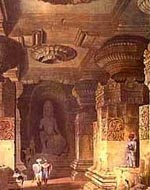 In India, all our art is ritualistic, especially the art of
the temples and the caves. When I went to the cave temples, to
Elephanta or Ellora, I found mountains hollowed out, and temples
built underneath them. The columns supporting the roof resembled
elephant legs, and the ceilings and the walls were gorgeously
decorated with the sculptured forms of human beings and of gods.
About 200 B.C, or earlier, a groups of monks went to meditate
under the rocks of Ajanta. In meditation they experienced
ecstasy, and having experienced it, they carved it on the wall.
The story of all the gods of India is carved on these walls, and
the youngest of them all is Buddha. Seven hundred years of
Indian history is written out in these caves covering vastness
with terrific forms. In India, all our art is ritualistic, especially the art of
the temples and the caves. When I went to the cave temples, to
Elephanta or Ellora, I found mountains hollowed out, and temples
built underneath them. The columns supporting the roof resembled
elephant legs, and the ceilings and the walls were gorgeously
decorated with the sculptured forms of human beings and of gods.
About 200 B.C, or earlier, a groups of monks went to meditate
under the rocks of Ajanta. In meditation they experienced
ecstasy, and having experienced it, they carved it on the wall.
The story of all the gods of India is carved on these walls, and
the youngest of them all is Buddha. Seven hundred years of
Indian history is written out in these caves covering vastness
with terrific forms.
I shall never forget my first visit to Ellora, reached after
two days tramp from the nearest town. When the sages of southern
India wanted to create an image of the universe, they went to
Ellora. They worked for one hundred and fifty years and used up
generations of artists. They carved a mountain into galleries,
and as these rose higher and higher, they gradually attained the
summit, and the whole mountain was covered as the Himalayas are
covered with strange life."
The
"Outcast" in the title refers primarily to Mukerji's
experience in America as a newly arrived, penniless Indian
student at the University of California, Berkeley, where he suffered
from racial discrimination - the Indian students were routinely
refused service in the campus restaurants.
(source: Caste
and Outcast - By Dhan Gopal Mukerji p. 110 -120).
For more on D G Mukerji refer to IndiaStar
Review).
287. Haven
O'More, a scholar at the University of Chicago
and author of several books, including Butoh
: Dance of the Dark Soul and Sacrificial
Bone Inscriptions, has written:
"Greater
than any mountain, the Mahabharata sits supreme...."
(source: Nostradamus
and Beyond: Visions of Yuga-Sandhi - By N S Rajaram
p. 41).
 288.Yann Martel
(1963
- ) a Canadian who
won this year's Booker Prize for Life
of Pi thinks: 288.Yann Martel
(1963
- ) a Canadian who
won this year's Booker Prize for Life
of Pi thinks:
''Hinduism
-- is a very open religion. It can lend itself to so much,''
Martel
claims he has always loved India. ''India
is all lives in one place, India is all emotions in one place.
It's an extra - ordinary, dazzling place, it's all the wonder
and horror of life.''
According
to him, India stokes the fires of creativity. ''There are
stories that can be told only in India. There are things that
are possible in India that are not possible anywhere else.'' ''It's a country that dazzles me because it is all of life. I
truly think that in some ways, India is the richest place on
earth.''
(source: India
is the richest place on earth: Booker winner-
sify.com).
289. Sir
Henry James Summer Maine (1822-1888) His first work, Ancient
Law was his most famous. He was (1862-69) legal member of
the viceroy's council in India, where he planned the
codification of Indian law.
This eminent Jurist has shown
that the old Brehon laws of Ireland are
derived from Vedic laws of India.
(source:
The
Vision of India - By Sisirkumar Mitra p.
208).
Sir Henry
Maine, a former Vice Chancellor of Calcutta university and an
advisor to the Viceroy echoed the sentiment of many Englishmen
when he said: "A nation has been born out of
Sanskrit."
(source: http://members.tripod.com/~ramkumaram/article3.html).
 290.
E. M. Plunkett
(
? ) writes
in his book Ancient
Calendars and Constellations: 290.
E. M. Plunkett
(
? ) writes
in his book Ancient
Calendars and Constellations:
"The
opinion of the Greek writers at the beginning of the Christian
era may be quoted as showing the high estimation
in which Indian astronomy was
held. In the Life of Appollonius of
Tyana, the Greek philosopher and astrologer, written by
Philostratus about 210 CE, the wisdom and learning
of Appollonius are set high above his contemporaries
because he had studied astronomy and astrology with the sages of
India."
(source:
Antiquity
of Indian Astrology).
291. James Prinsep
(1799-1840) an employee of the East India Company, deciphered the Brahmi
script in 1883 and author of Essays
on Indian antiquities, historic, numismatic, and palaeæographic of the late
James Prinsep, is
recorded to have observed that:
"Greek
was nothing more than Sanskrit turned topsy-turvy."
"The fact, however, that he (Pythagoras)
derived his doctrines from an Indian source is very generally admitted. Under
the name of Mythraic, the faith of Buddha had also a wide extension."
(source: Hindu
Superiority - By Har Bilas Sarda p. 280 - 281).
292. William
Enfield (1741-1797) ) was
an influential dissenting theologian and tutor at Warrington
Academy. His History is a translation of Johann Jakob Brucker's
"Historia Critica Philosophiae (first published in six
volumes in 1742--67), the most significant and scholarly history
of philosophy of the pre-Kantian era. He has written:
"We find that it (India) was
visited for the purpose of acquiring knowledge by Pythagoras,
Anaxarchus, Pyrrho, and others who afterwards became eminent
philosophers in Greece."
(source: History
of Philosophy - By William Enfield Vol. I p. 65).
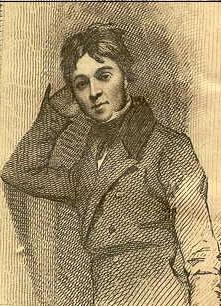 293.
Thomas Carlyle (1795 - 1881)
Scottish-born English historian and essayist who was leading
figure in the Victorian era. 293.
Thomas Carlyle (1795 - 1881)
Scottish-born English historian and essayist who was leading
figure in the Victorian era.
He was a historian, novelist and
essayist who exerted a huge influence over the Victorian
age. His major works are the satirical novel Sartor
Resartus (1833-4) The French Revolution (1837)
and the lecture-series On Heroes, Hero-Worship and the Heroic in
History (1841).
The Vedantic note in Carlyle's
writings is too well known to require mention. And
the Gita was the only book he chose to present to Ralph Waldo
Emerson when the latter met him for the first time.
(source:
The
Vision of India - By Sisirkumar Mitra p.
204).
Thomas Carlyle,
in Sartor Resartus exclaims:
“Detached,
separated! I say that there is no such separation, nothing
hitherto was ever stranded, cast aside; ….The withered leaf is
not dead and lost, there are Forces in it and around it, though
working in inverse order, else how could it rot?…Rightly
viewed no meanest object is insignificant: all objects are as
windows, through which the philosophies eye look into infinitude
itself.”
In
the last lines he rises to passionate heights in his assertion
of the same theory which fascinated the first Hindu thinkers.
(source:
Indian Philosophy and
Modern Culture - By Paul Brunton p. 33 - 35 London
Rider & Co. Paternoster House, E. C).
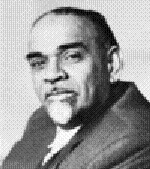 294.
Sardar Kavalam Madhava Panikkar (1896-1963)
Indian scholar, journalist, historian from Kerala,
administrator, diplomat,
Minister in Patiala Bikaner and Ambassador to China, Egypt and
France.
Cambridge
historian Arthur
Hassall (1853 - 1930) wrote that in his “long
career as tutor of history at
Christ
Church
” he had “never had a more brilliant student”. 294.
Sardar Kavalam Madhava Panikkar (1896-1963)
Indian scholar, journalist, historian from Kerala,
administrator, diplomat,
Minister in Patiala Bikaner and Ambassador to China, Egypt and
France.
Cambridge
historian Arthur
Hassall (1853 - 1930) wrote that in his “long
career as tutor of history at
Christ
Church
” he had “never had a more brilliant student”.
Author of several books, including Asia
and Western Dominance,
India Through the ages
and India
and the Indian Ocean.
He has
succinctly summed up the basic tenets of Hinduism, which show
that the Divine for the Hindu is a family phenomenon and not a
distant Truth.
He says:
"The Hindu
believe in one God, conceived as the universal soul or Paramatma,
the absolute and eternal, beyond the categories of thought and
expression, and embracing the entire universe. The text - there
is only One, the learned speak of it in many ways. Though the
Paramatma is impersonal or without qualities in itself in
relation to the world expressed in terms of the relative, it is
personal and man's mind conceives it as having qualities and
form. This leads to the doctrine of Ishta Devata, or God, as
conceived according to one's preference, as father, mother,
guru, lover or even friend. The One Supreme thus assumes for the
devotee the qualities and form in which he likes to worship.
Many who worship the Supreme as Krishna think of him as a
playful child, others as the great guru. In the same way, God is
conceived by others as the Divine Mother. It is this doctrine of
Ishta Devata, the freedom given to every one to worship God with
the attributes of his own choice, never however forgetting that
the Supreme has no qualities, that has led to the misconception
that Hinduism is polytheistic. In a sense, it is true that there
can be as many forms of Godhead in Hinduism as there are
believers, for each one can conceive God only as the limitations
of his own mind permit him."
(source: Hinduism:
Its Contribution to Science and Civilization- By Prabhakar
Machwe p. 114-115).
 295. Joseph
Needham (1900-1995) is
famous mainly for the formidable magnitude and scholarship of
his work on science in China. He impressed by the
achievements of India in the field of knowledge and
learning. 295. Joseph
Needham (1900-1995) is
famous mainly for the formidable magnitude and scholarship of
his work on science in China. He impressed by the
achievements of India in the field of knowledge and
learning.
He comments on the Indian
fascination with perpetual motion, 'to seek the ultimate origin
or predisposition of the Indian conviction in the profoundly
Hindu world view of endless cyclical change, kalpa and
mahakalpas succeeding one another in self-sufficient and
unwearying round. For Hindus as well as Taoists, the universe
itself was a perpetual motion machine."
(source: The
Speaking Tree:
A Study of Indian Culture and Society
- By Richard Lannoy
p. 292).
In
his lecture to the students of Cambridge University in 1963 he
gave full compliments to India's intellectual heritage. He said,
'it is good to remember, therefore, that our own pious founders
were not the only men, and that Christendom was not the only
culture, to set on foot great and noble institutions of learning
where successive generations of students assembled to get the
benefits of education and research. When the men of Alexander
the Great came to Taxila in India in the fourth century BC they
found a university the like of which had not then been seen in
Greece… and was still existing when the Chinese pilgrim
Fa-Hsien went there about AD 400.
(source: infinityfoundation.com).
"....Indian culture in all
probability excelled in systematic thought about Nature (as for
example in the Samkhya atomic theories
of Kshana, bhutadim paramanu,etc.), including also biological
speculations...When the balance comes to be made up, it will be
found I believe, that Indian scientific history holds as many
brilliant surprises....."
(source: Homo
Faber: Technology and Culture in India, China and the West
1500-1972 - by Claude Alphonso Alvares p. 69 -
70).
 296.
Stephen
Knapp (Sri Nandanandana Dasa) (
? ) American born
author
of several books including The
Secret Teachings of the Vedas : The Eastern Answers to the
Mysteries of Life and Proof
of Vedic Culture's Global Existence. 296.
Stephen
Knapp (Sri Nandanandana Dasa) (
? ) American born
author
of several books including The
Secret Teachings of the Vedas : The Eastern Answers to the
Mysteries of Life and Proof
of Vedic Culture's Global Existence.
He has observed the following
about the total freedom in Hinduism:
"One of the unique things
about Vedic philosophy is that within the many texts it
contains, it deals with all varieties of viewpoints, from
impersonalistic atheism, outright materialism, to loving
devotion to God. And you have room to discover and realize the
knowledge at your own rate, whether it be many months, many
years, or even lifetimes. In other words, you may at first be an
impersonalist persuasion and believe that the Supreme is only a
great unembodied force. Or you might believe that God is a
person. Or you may worship Durga, Ganesh, Shiva, Vishnu or
Krishna, and still be considered on the Vedic path, though on
different parts of the path. But this is the sort of freedom and
opportunity you have in the Vedic philosophy for your growth and
development. However, we find that in other religions, such as
Christianity and Islam, if you question or doubt the local
scriptures or authorities, or argue different points of view, or
look for answers from another religion, your faith will be
questioned, you may be called a heretic, and you may even be
excommunicated from the Church, which is supposed to equate with
eternal damnation. This is obviously a very closed minded
discipline to work in compared to the freedom of Vedic system.
After all, what kind of God would make a system in which you
have only one life to live and only one chance to discover how
to attain Him, and then follow all the scriptural demands and
requirements or face eternal damnation?
"In fact, history shows that
the three traditions of Judaism, Christianity, and Islam have,
in their monotheistic theology developed patterns and traits of
prejudice, intolerance, violence and war against all other
religions and cultures. In fact, the history of these three
religions show that they have spread primarily because of
political intolerance for other religions, militant zeal, and
through fear of persecution, rather than by spiritual purity. Hinduism,
on the other hand, has not spread on the basis of fear, whether
that fear be of political persecution or fear of a wrathful
God. "
 "The Vedic philosophy contains the oldest spiritual
texts of any religion in the world, and its more advanced
concepts can be difficult for event the greatest scholars of the
West to fathom." "The Vedic philosophy contains the oldest spiritual
texts of any religion in the world, and its more advanced
concepts can be difficult for event the greatest scholars of the
West to fathom."
(source: The
Universal Path to Enlightenment - By Stephen Kanpp
preface vi-viii and 4).
"The Vedas are not new to
the Western world. There have been seekers, writers, poets,
philosophers, and people of all levels who have appreciated the
depth, inspiration, and insight of Vedic thought for many
years."
(source: The
Secret Teachings of the Vedas - By Stephen Knapp
p. 31 and http://www.stephen-knapp.com/).
297.
Shri Jagmohan
( ? ) Union
Minister of Tourism and Culture of India has recently observed:
"The
hallmark of India has been the power of its mind. It was this power of mind
which found expression in its pre-eminent philosophy, religion, culture and way
of life.
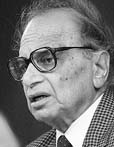 One
of the finest pieces of evidence which shows how powerful and insightful was
once the Indian mind was its clear and correct understanding of the pattern of
human existence on this planet and beyond. It perceived the “non-dual
reality” that lies behind the smoke-screen of “surface duality” and
realized that the universe was an organic web in which every item of life and
nature was inextricably enmeshed with every other item. It also understood that
this web was permeated with a cosmic force of which man and nature are the
constituents as well as the contributors. One
of the finest pieces of evidence which shows how powerful and insightful was
once the Indian mind was its clear and correct understanding of the pattern of
human existence on this planet and beyond. It perceived the “non-dual
reality” that lies behind the smoke-screen of “surface duality” and
realized that the universe was an organic web in which every item of life and
nature was inextricably enmeshed with every other item. It also understood that
this web was permeated with a cosmic force of which man and nature are the
constituents as well as the contributors.
This
deep perception, this great realization and this subtle understanding of the
Indian mind so impressed the renowned American poet and philosopher, Emerson,
that he wrote a beautiful poem, titled “Brahma”, in which he gave expression
to the concept of non-duality. Clearly,
what the Indian mind discovered, centuries earlier, by virtue of its perceptive
power and its higher level of consciousness, was discovered by the modern
science only recently. The profundity of the concepts of the universe being an
organic web, as evolved by the Indian mind, in the heydays of its power, can
best be brought
The
Indian mind was the earliest to grasp the significance of maintaining the
ecological balance. From time immemorial, our sages and saints have been
propagating: “The Earth is our Mother and we are its Children.” One of the
earliest Vedic hymns, composed over 4,000
years ago, gave the message of what is now termed as sustainable development:
“Whatever I dig of you, O Earth,\ May you of that have quick replenishment!\ O
Purifying One, may my thrust never\ Reach right unto your vital points, your
heart!”
(source:
Power
of the Indian mind: our heritage & asset - by Jagmohan -
tribuneindia.com - editorial Sunday February 23 2003).
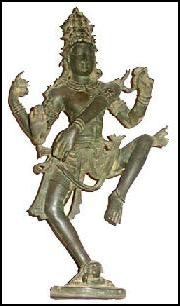 298. L S S
O'Malley ( ?) author of Popular Hinduism writes about
Hindu Literature as giving help to a sense of moral value and to
maintain a healthy ethical standard. The two great epics, the
Mahabharata and Ramayana, are a means of moral education for
millions, teaching moral lessons in concrete terms and
illustrating in the lives of heroes and heroines such virtues as
truth, love, fidelity, courage and calm resignation. 298. L S S
O'Malley ( ?) author of Popular Hinduism writes about
Hindu Literature as giving help to a sense of moral value and to
maintain a healthy ethical standard. The two great epics, the
Mahabharata and Ramayana, are a means of moral education for
millions, teaching moral lessons in concrete terms and
illustrating in the lives of heroes and heroines such virtues as
truth, love, fidelity, courage and calm resignation.
"Besides giving examples of
noble lives, the literature of the Hindus is full of lines
announcing moral truths and inculcating virtue. In the Ramayana
Rama, who is himself a pattern of loyal truthfulness, declares:
"Truth is lord in the world; virtue always rests on
truth.
The Mahabharata
has been described as an encyclopedia of moral
teaching, the nature of which may perhaps be judged from a few
extracts. "The sum of true righteousness is to treat others
as you yourself would be treated. Do nothing to your neighbor
that you would not have your neighbor do to you hereafter."
"It is the constant duty of the good to injure no one by
thought, word or deed, to give to others and to be kind to
all." "High minded men delight in doing good without
thought of their own interest. when they confer a benefit on
others, they do not count on favors in return."
"Fasts, ablutions and austerities are all in vain unless
the soul is pure." "Overcome the wicked by
goodness."
' The complexity of Hinduism is
so great, the forms which it assumes so protean, that it defies
precise definition. It is a composite religion made up of many
conflicting elements.... It allows the greatest possible freedom
of thought as apart from practice, as is admitted by Hindu
scholars."
Hinduism has a
highly spiritual side and contains many sublime
conceptions."
(source: Popular
Hinduism - L S S O'Malley p. 81- 86).
 299. Sir
James Mackintosh (1765-1832) British writer and
Philosopher. He was trained as a physician, but after settling
in London he became a writer and lawyer. He served as recorder of Bombay (1804-6) and judge
in Bombay vice-admiralty court (1806-12). He called: 299. Sir
James Mackintosh (1765-1832) British writer and
Philosopher. He was trained as a physician, but after settling
in London he became a writer and lawyer. He served as recorder of Bombay (1804-6) and judge
in Bombay vice-admiralty court (1806-12). He called:
"the theory
(propounded by Vedanta) refined, abstruse, ingenious and
beautiful."
(source: Hindu
Superiority - By Har Bilas Sarda p. 297).
300.
Gustav
Holst (1874 - 1934)
composer of S¯avitri ; The dream-city,
Choral
hymns from the Rig Veda and S¯avitri;
an episode from the Mah¯abharata, Op. 25
He was Vaughan Williams’ greatest friends. Despite his German name, Holst was born in Cheltenham in
1874. Holst’s music as exploring ‘mystical regions’
Conventional
religion did not interest Holst, and he felt himself drawn
towards Hinduism. He believed in the concept of Dharma and the
idea of life after death, and this eastern influence
also led to his love of astrology. Holst’s beliefs are
revealed in a letter to a friend : -
‘…everything in this world
– is just one big miracle. Or rather, the universe itself is
one.’
He conceived as well a passion
for Wagner, whose style looms large in Hoist's apprentice works,
and an interest in Hindu philosophy and literature. The
most notable of many works springing from Holst's preoccupation
with Hinduism was the chamber opera Savitri
dating from 1908, based on an episode from the epic poem Mahabharata:
its economy and intensity are exemplified in the arresting and
dramatic opening, where Death sings, offstage and unaccompanied.
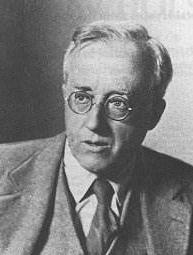 This
English composer composed operas about Sita
and Savitri and other works
based on Hindu themes. It was in 1895
that Holst first became interested in Hindu philosophy and
Sanskrit literature. His immediate impulse was to set
some hymns from the Rig Veda,
the most important of the Hindu scriptures, to music. Finding
the English translations he discovered were hopelessly stilted,
Holst decided to learn Sanskrit so that he could translate the
words to his own satisfaction. in doing so, he opened an
entirely new world for himself. This
English composer composed operas about Sita
and Savitri and other works
based on Hindu themes. It was in 1895
that Holst first became interested in Hindu philosophy and
Sanskrit literature. His immediate impulse was to set
some hymns from the Rig Veda,
the most important of the Hindu scriptures, to music. Finding
the English translations he discovered were hopelessly stilted,
Holst decided to learn Sanskrit so that he could translate the
words to his own satisfaction. in doing so, he opened an
entirely new world for himself.
Holst
began work in an opera, Sita, in 1899. It is based in the
Hindu epic Ramayana. He
worked on it, on and off, until 1906. Although it was never
performed in his lifetime, he learned a great deal from it . In
1903 he also wrote a symphonic poem titled Indra, which
was a vivid portrait of the god, Indra, and his battle with the
drought.
At home in England again, a
reinvigorated Holst began working on another Indian opera which
he called, Savitri. This was a much smaller work only
lasting a little over thirty minutes. The music was written for
three soloists, a small hidden chorus, and a chamber orchestra.
During this time, Gustav was at the height of his interest in
setting Sanskrit texts. From 1908 to 1912, he wrote four sets of
hymns from the Rig Veda, the Vedic Hymns for voice and piano,
and the large scale choral work called The Cloud Messenger.
(source: http://hem.passagen.se/alkerstj/worldofclassicalmusic/early20th/gustav_holst.html
and http://wso.williams.edu/~ktaylor/gholst/).
For more refer to chapter on Hindu
Music).
Top
of Page
Quotes301_320
  
Page < 1 2 3 4 5 6 7 8 9 10 11 12 13 14 15 16 17 18 19 20 21 22 23 24 >
|